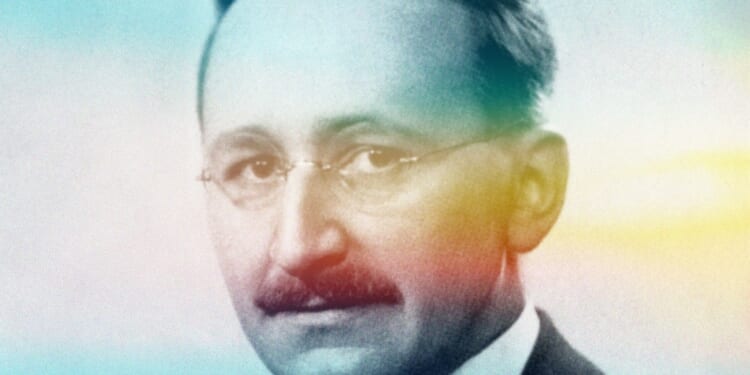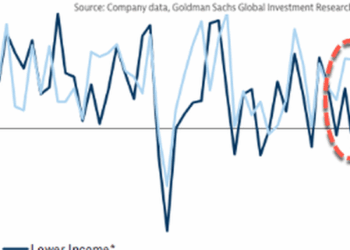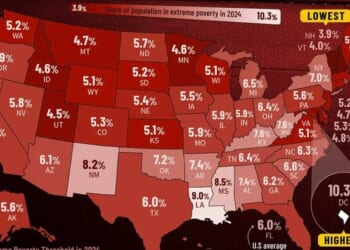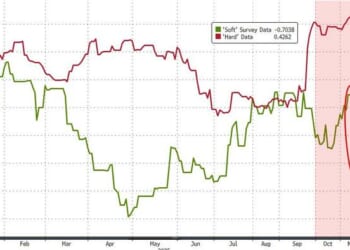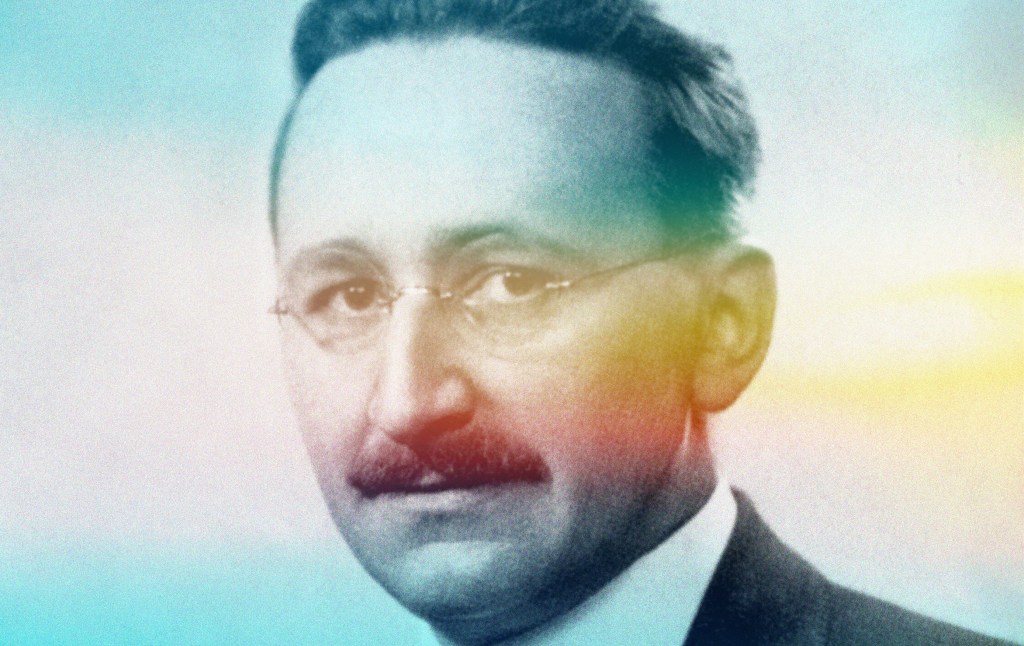
From President Donald Trump’s aggressive tariffs and acquisition of government stakes in industrial and tech businesses to Zohran Mamdani’s avowedly socialist New York mayoral campaign, politicians in 2025 are not shy about central economic planning. That makes the work of the acclaimed economist F.A. Hayek, including the “knowledge problem” he exposed as a fundamental flaw in such enterprises, as relevant as ever.
Hayek’s insights were formed as world governments made their great foray into central planning in the 1930s. His entire career was framed by World War I, the Great Depression, World War II, and the Cold War. Totalitarian threats from the left and right were ever present and served as the historical background against which he made his contributions to social science.
His most famous work, 1944’s The Road to Serfdom, was one result. In it, he illuminated how socialism—a term for government planning and ownership of the means of production, whether or not politicians describe their policies this way—is incompatible with liberal democracy and material progress. In the British context within which Hayek wrote, his argument amounted to the claim that the promise of a “New Jerusalem” would produce instead a new hell on earth. “That democratic socialism,” Hayek wrote, “the great utopia of the last few generations, is not only unachievable, but that to strive for it produces something so utterly different that few of those who now wish it would be prepared to accept the consequences, many will not believe until the connection has been laid bare in all its aspects.”
Laying bare the reasons for those consequences occupied Hayek’s scientific attention for much of his life and career. Critical to Hayek’s argument was that central planning or socialistic policies cannot replace the efficiency with which a true market economy— driven by competition, profit, and loss—uses society’s limited resources. Nor can such policies match a free market’s staggering ability to stimulate the creative innovation and technological change that quickly enhances the human condition.
To economists like me, however, Hayek is most appreciated not so much for the arguments in The Road to Serfdom as he is for his further exploration of this critical problem with socialist planning in The Use of Knowledge in Society, published 80 years ago last month.
Hayek lays out society’s fundamental economic challenge quite clearly: It’s “not merely a problem of how to allocate ‘given’ resources,” of settling the usual who-gets-what-and-how debate. Instead, it’s a knowledge problem: How can we make the best, most efficient use of our limited resources when no single entity—even a large federal government—can know everything there is to know about a given economy?
Can a team of the world’s greatest economists come close to accounting for what a factory will pay for steel, what it will do next if it can’t find the right price, and what every employee or steel-using industry (and those companies’ employees) will do once they are affected? The ripple effects are endless and unknowable.
Nor can planners know what that firm’s employees are willing to pay for a sandwich outside the plant, or what the sandwich maker, bread baker, and meat supplier—each with their own set of countless, unknowable circumstances—are willing and able to do to meet the worker’s price. There’s simply too much information underlying even the simplest-seeming economic transactions. This is the “mystery of the mundane” that Hayek sought to illuminate in his writings, much like Adam Smith did with his baker, brewer, and butcher, and Milton Friedman did with the No. 2 pencil he displayed on the cover of his seminal work, Free to Choose. How do the most common products of daily life come into existence and find their way to your door to satisfy the demands you have for improving circumstances in your everyday life?
This problem, Hayek argued, had been obscured rather than illuminated by the formal economic models of the time. These models assumed away the ways in which individuals and businesses adjust their behavior to a price change, surplus or shortage, regulation or government policy, and thus fail to capture the dynamics of commercial life. Many of our economic models today have the same shortcomings. This is not only true of contemporary models of market structure, such as perfect competition or monopoly, but also macroeconomic models used to guide the management of business, consumer, and government spending. Even the arguments one hears about the “irrationality” of individuals and its implications for public policy are based in the textbook models of maximizing behavior and competitive equilibrium.
But the dynamics of a market aren’t a given to be applied as one thinks wise when powerful people want to mandate lower rent or produce more computer chips. They must be generated, discovered, utilized, and conveyed—constantly adapting and adjusting to the changing circumstances of economic life. “The continuous flow of goods and services,” Hayek wrote, “is maintained by constant deliberate adjustments, by new dispositions made every day in the light of circumstances not known the day before, by B stepping in at once when A fails to deliver.”
Hayek stressed that his argument was never against planning per se; plans are a constant part of the commercial life of the capitalist economy. We plan as producers, and we plan as consumers.
Prices are the conduit through which this vital knowledge is communicated, Hayek argued, making unencumbered markets an almost-miraculous telecommunication system that aids us all in changing circumstances.
Why? Because prices are the result of the relentless push-and-pull among what consumers value, what sellers seek, plus supply chains, technology changes, resource availability, and every other conceivable factor. Setting a true market price—not having one dictated from on high—is done only after these unknowable forces have been incorporated into the marketplace and felt, directly but more often indirectly, by the seller.
The price system works because of private property and freedom of contract, which are the antithesis of central planning.
Property ownership creates high-powered incentives to husband resources efficiently. We don’t waste what we—as opposed to someone else—pays for. Profits, enabled by the freedom to buy and sell our goods or labor to whom we choose at the price the market determines, lure us into attractive ventures. Losses discipline us when conjectures prove to be mistaken.
This system, always adjusting and unfurling, gives us, as economic decision-makers, constant feedback. It allows us to plan—to know whether to rent an apartment for the next year or buy a house that will last us a lifetime, go to trade school or college, hire five employees or 10, to build 100 cars or 200—and have the best possible chance of success.
The key point Hayek was trying to get across to his fellow economists was that the ability to mobilize the ordinary behavior of individuals in society, to make the most of our physical resources, and to utilize the knowledge and talent scattered throughout society requires not more control from central planners, but more market competition and the price system.
Socialist central planning and other formal planning models attempt to override this critical process and have blinded some economists to the necessity of the economic process. Every society seeks, and even needs, a system that can produce more with less. Socialism gives us one that produces less with more resources. It does so because by definition it cannot rely on the powerful incentives property ownership provides, the guidance that prices give buyers and sellers to orient their behavior toward the future, the lure and attraction of profits to switch on the economic antennae of alert decision makers, and the penalty of loss that disciplines those who make bad decisions with respect to use of resources under their control.
This goes back to Hayek’s The Road to Serfdom and his belief that socialism in practice in all its variants produced economic degradation and political tyranny. That his message is not more widely understood and appreciated is an intellectual travesty.
One reason we miss the point is that our models and ways of thinking obscure how economic systems work. Another reason is confusion over the concept of “planning.” Hayek stressed that his argument was never against planning per se; plans are a constant part of the commercial life of the capitalist economy. We plan as producers, and we plan as consumers. The problem with the planning Hayek was critiquing was about who was doing the planning, and for whom they were planning. Planning by a firm in a free market is wholly different from planning by a state committee for an entire economy. When this planning system was applied on the largest scale—in the Soviet Union and East and Central Europe—it failed spectacularly at creating a burst of productivity. Those who suffered under these regimes saw their wealth destroyed, their physical health decline, and their freedoms dwindle.
The market system leads instead to longer and more prosperous lives, to a freer and more humane existence. It does so because of what market competition does, and the role of prices in the operation of markets. The price system is, in Hayek’s rendering, the true “machinery” for registering change. But it is the farthest thing from a machine in that its operation is not mechanical, let alone automatic. It’s the byproduct of purposeful human action undertaken simply in each person’s best interest. As Hayek’s intellectual forebear Adam Smith taught us in The Wealth of Nations, it results in the vast improvement in our material conditions. Humanity moved from a millennium of living in poverty and poor health to living an existence best described as wealthy and healthy due to the miracle of modern economic growth in societies that relied on open markets and the dynamic adjustments of the price system.
But the market system is not some noble experiment in social benevolence. Adam Smith’s famous “bakers, brewers and butchers” don’t feed us out of the kindness of their hearts. They do so to secure their own meals. As Smith put it, we rely on for our daily survival the cooperation of a great multitude of individuals who we do not know and never will know.
Building on Smith’s essential point, Hayek stressed to his peers in professional economics that this market system is a “marvel,” demonstrated by that fact that “a scarcity of one raw material, without an order being issued, without more than perhaps a handful of people knowing the cause, tens of thousands of people whose identity could not be ascertained by months of investigation, are made to use the material or its products more sparingly; that is, they move in the right direction.”
This is the economic planning of the market; the power of prices that politicians don’t set. The spontaneous order of the market is indeed a “marvel.” And, if we don’t develop an appreciation for this we run the risk of believing we can bypass the market process and reshape the economic world based on our political will. Government will be turned to as the corrective to social ills, and trained experts will be given great power to achieve societal goals. Hayek sought to poke a hole in this false confidence of the socialist economic planners and social democratic macroeconomic managers of his time.
Hayek tells us he chose the word “marvel” deliberately, to “shock the reader out of their complacency.” Unfortunately, this shock to complacency remains necessary as the quest to control and design our economy remains strong. The technical tools taught to students from high school to doctoral programs are more appropriate for the task of social control than cultivating the tried-and-true social understandings that classical thinkers from Smith to John Stuart Mill to Hayek provided.
Reorienting our thinking along these classical Smithian lines of understanding the power of the market and the tyranny of controls has allowed us to see that Hayek’s marvel of the market is still pretty marvelous.

